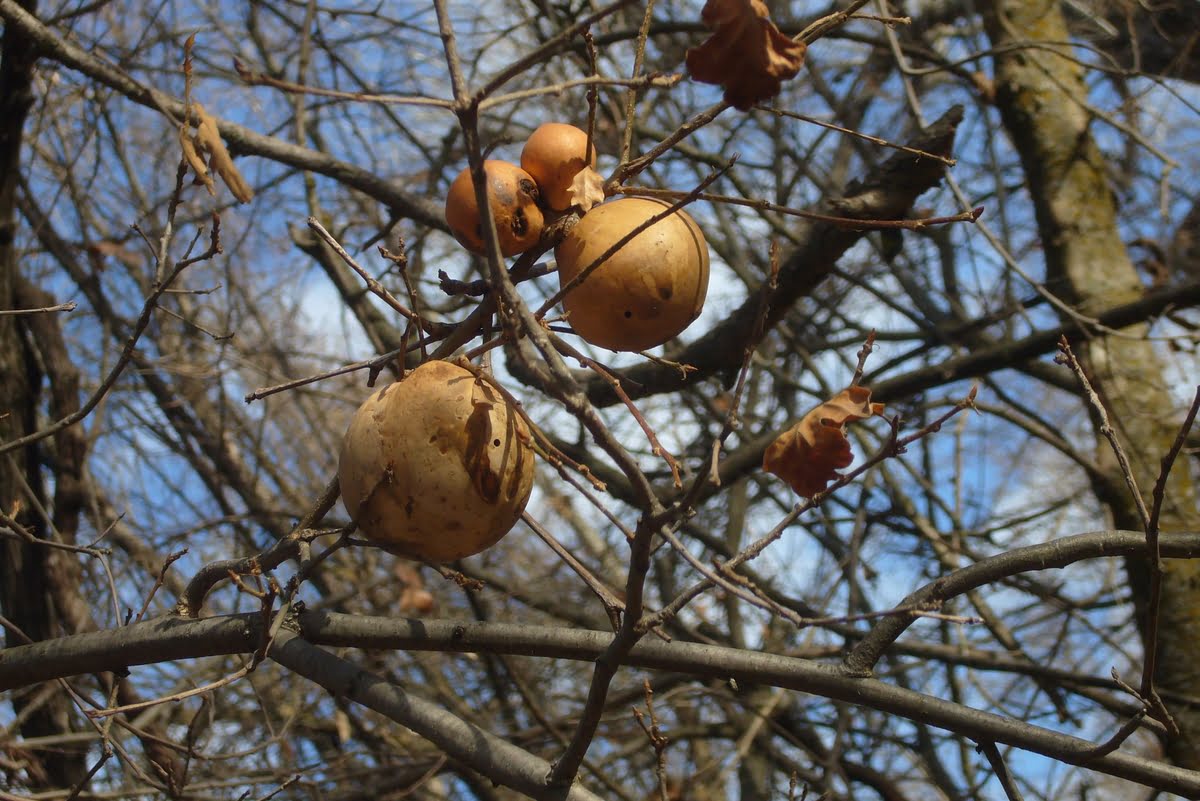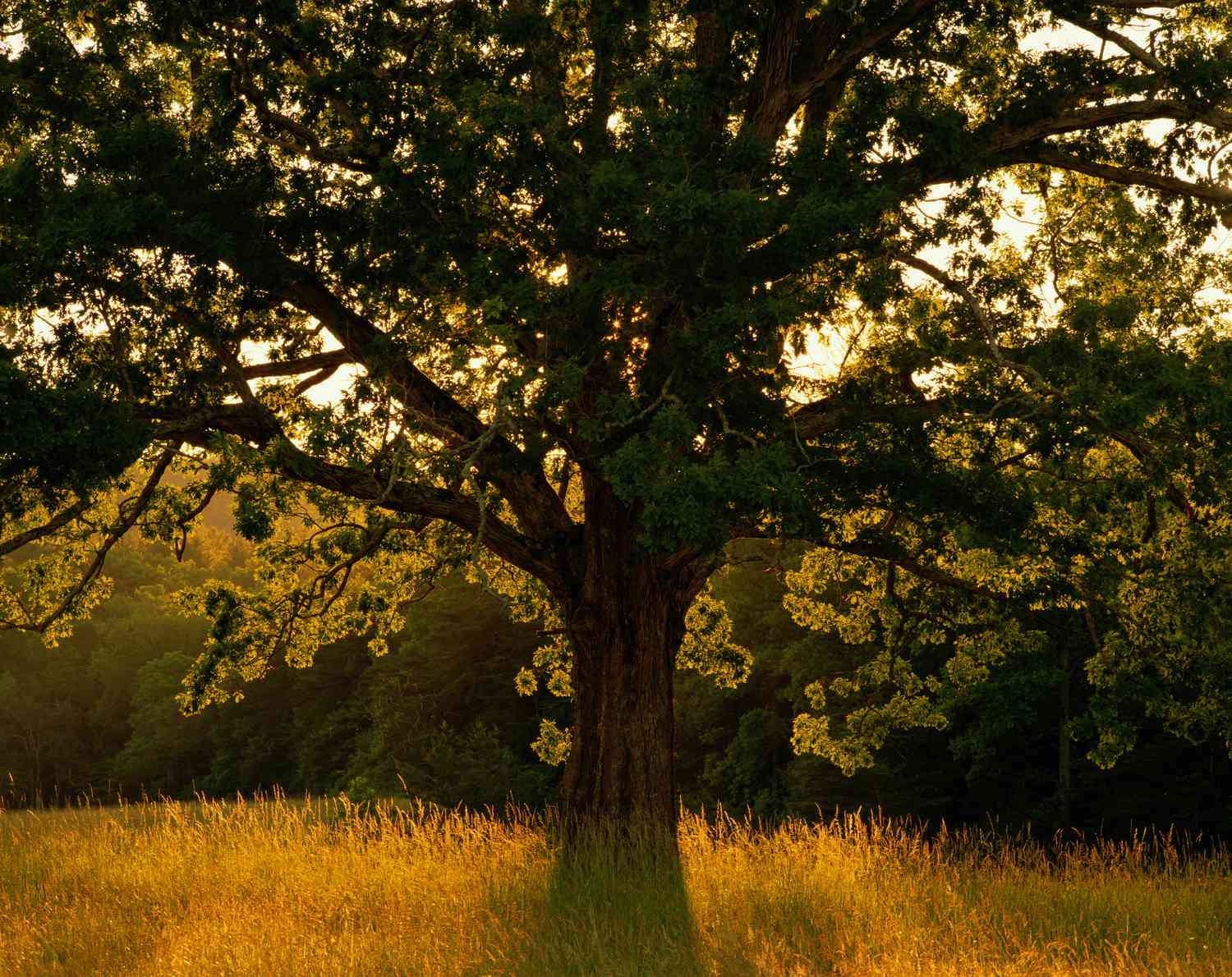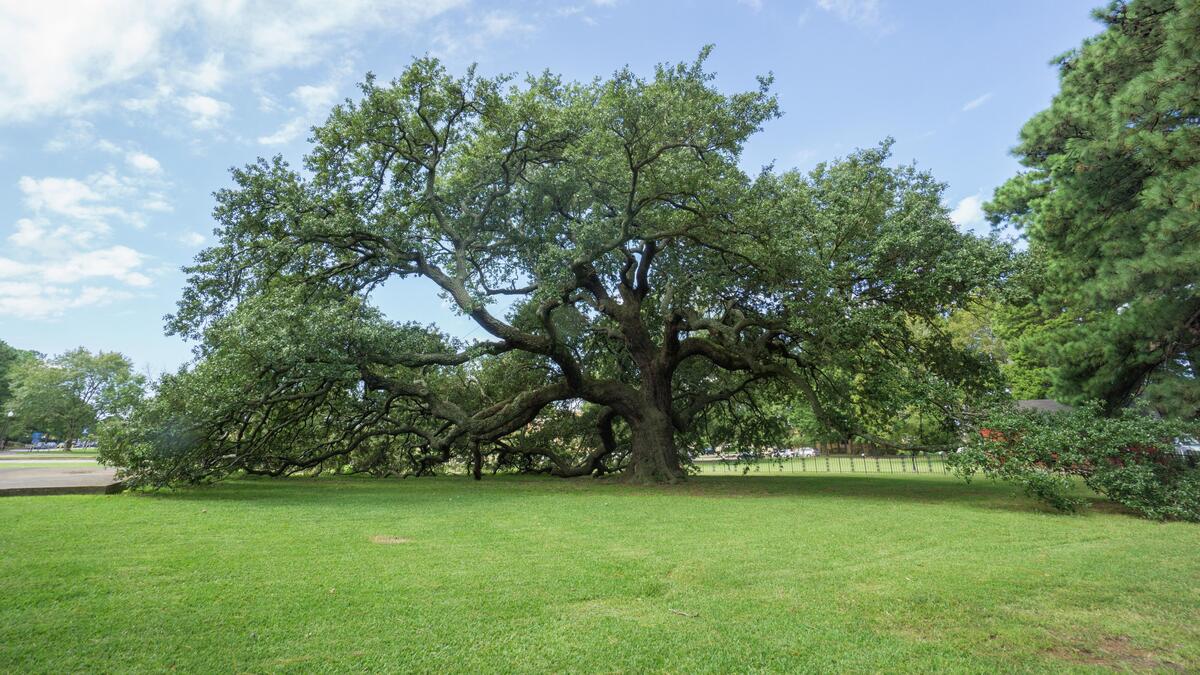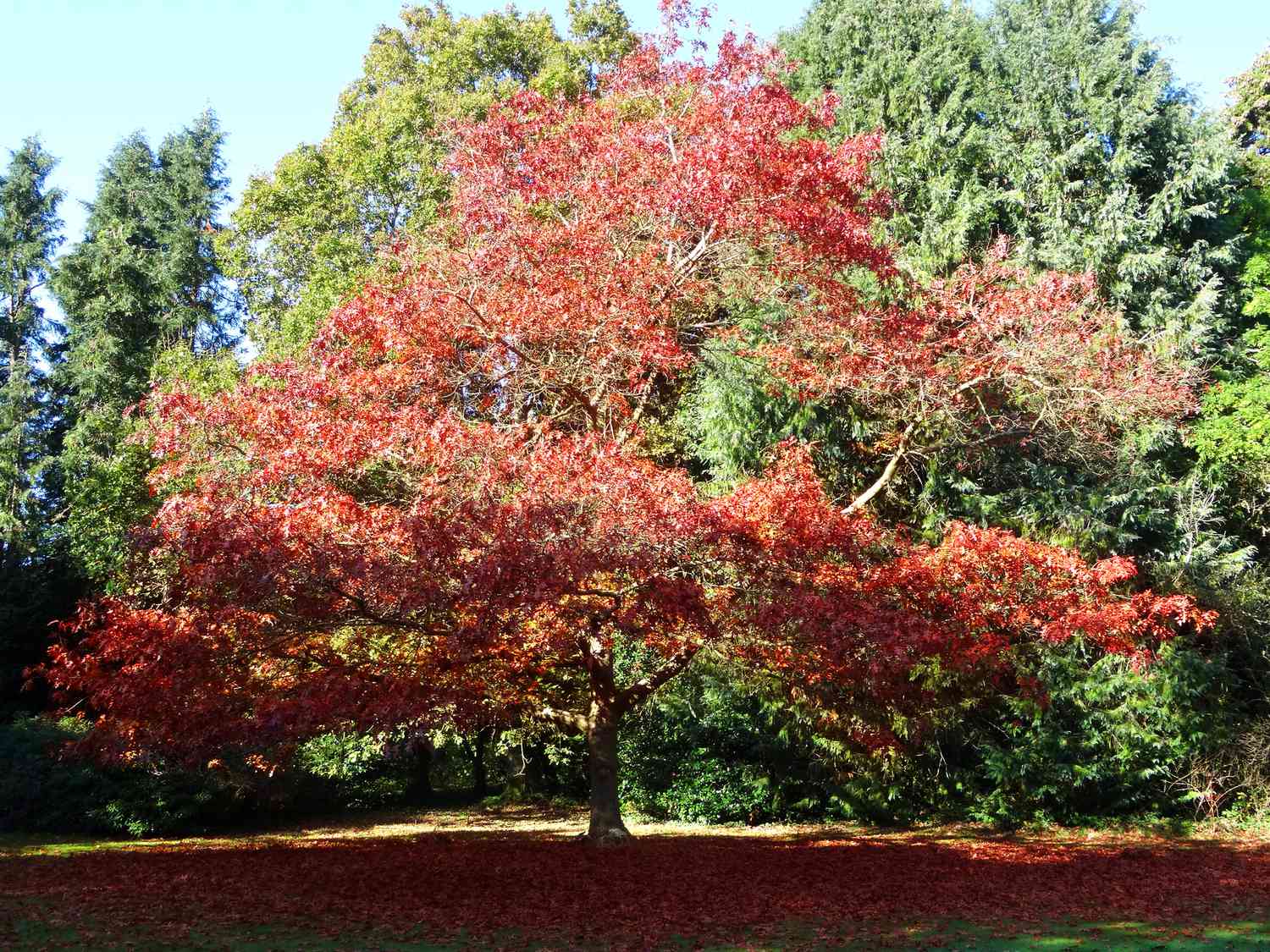Home>Gardening Techniques>Plant Care>What Are The Brown Things That Fall From Oak Trees


Plant Care
What Are The Brown Things That Fall From Oak Trees
Modified: January 22, 2024
Learn about plant care and discover what are the brown things that fall from oak trees. Find out how to care for your plants and maintain a healthy garden.
(Many of the links in this article redirect to a specific reviewed product. Your purchase of these products through affiliate links helps to generate commission for Chicagolandgardening.com, at no extra cost. Learn more)
Table of Contents
Introduction
Welcome to the fascinating world of oak trees and their mysterious brown things. If you’ve ever spent time near an oak tree, you have likely noticed these peculiar objects scattered on the ground. You may have wondered what they are and why oak trees shed them.
In this article, we will unravel the secrets of the brown things that fall from oak trees. We will explore their characteristics, potential uses, and how to clean them up effectively. So, let’s dive into the enchanting world of oak tree shedding!
Oak trees are known for their majesty and grandeur. They are iconic symbols of strength and resilience, and their sprawling branches provide shade and shelter for countless creatures. However, every season, oak trees go through a natural process of shedding leaves, acorns, and other fascinating objects – including the infamous brown things.
As we embark on this journey of discovery, it’s important to note that the term “brown things” is a colloquial expression used to describe a specific part of an oak tree’s life cycle. These brown things are actually known as catkins or oak tassels, which play a vital role in the reproduction of oak trees.
Now that we have a basic understanding of what we are dealing with, let’s delve deeper into the captivating world of oak trees and the intriguing phenomenon of their shedding brown things. Join me as we explore the reasons behind the shedding, the characteristics of these brown things, and the potential uses they hold. And fear not! We will also discuss how to effectively clean up these fallen treasures without harming the environment.
Why Do Oak Trees Shed Brown Things
The shedding of brown things by oak trees is a natural and essential process that occurs as part of their reproductive cycle. These brown things are catkins, which are the male flowers of oak trees. Understanding why oak trees shed these brown things requires us to explore the incredible process of oak tree reproduction.
During the spring season, oak trees begin their reproductive journey. Catkins, also known as oak tassels, develop on the branches of oak trees. These elongated structures hang down from the tree and are adorned with small, dangling flowers. These flowers may appear as tiny brown or yellow scales, depending on the oak tree species.
The purpose of shedding these brown things is to release pollen into the air. Wind plays a crucial role in the pollination process of oak trees. When the wind blows, it carries the pollen from the catkins to nearby female flowers, known as oak clusters. This transfer of pollen enables the fertilization of the female flowers, leading to the production of acorns.
The shedding of brown things by oak trees is not a one-time event. It occurs annually as part of the oak tree’s reproductive cycle. Once the catkins have served their purpose in pollination, they wither and fall from the tree, forming a carpet of brown things on the ground.
It’s important to note that not all oak tree species shed brown things in the same manner or at the same time. Some oak trees shed their catkins in early spring, while others may shed them later in the season. This variation in timing is influenced by factors such as climate, location, and the specific oak tree species.
The shedding of brown things by oak trees is a mesmerizing spectacle, signaling the beginning of the oak tree’s reproductive journey and the promise of new life in the form of acorns. It is a testament to the intricate and awe-inspiring workings of nature.
Characteristics of the Brown Things
The brown things that fall from oak trees, also known as catkins or oak tassels, possess distinct characteristics that make them truly remarkable. Let’s explore the unique attributes of these fascinating botanical treasures.
Size and shape: Brown things vary in size and shape depending on the oak tree species. They can range from a few centimeters to several inches in length. Catkins typically have a slender and elongated form, resembling miniature tassels or hanging clusters of tiny flowers.
Color: As their name suggests, brown things have a predominantly brown hue. However, depending on the oak tree species, they may also exhibit shades of yellow, green, or even reddish-brown. The coloration may change as the brown things mature and eventually wither.
Texture: When you pick up a brown thing, you will notice a combination of softness and rigidity. The catkins are composed of scales and tiny flowers, which may appear fuzzy or smooth to the touch. Their texture adds to the allure and tactile experience of handling these natural marvels.
Durability: Despite their delicate appearance, brown things are surprisingly resilient. They can endure various weather conditions and remain intact for weeks, providing a lasting visual reminder of the oak tree’s reproductive cycle. However, over time, they may become brittle and break apart.
Seasonal availability: Brown things are primarily present during the springtime when oak trees undergo their reproductive cycle. As the weather transitions into summer and fall, the catkins will gradually disappear from the branches, leaving behind only memories of their unique presence.
Visual appeal: The presence of brown things adds a distinct aesthetic charm to the landscape. Whether lying scattered on the ground or hanging gracefully from the branches, they serve as a captivating sight for nature enthusiasts and an inspiration for artists and photographers.
It’s important to appreciate and admire the characteristics of brown things, as they represent a small but significant part of the intricate journey of oak tree reproduction. Their beauty and uniqueness remind us of the wonders and diversity found in the natural world.
Potential Uses of the Brown Things
The brown things that fall from oak trees, also known as catkins or oak tassels, offer potential uses beyond their role in the reproductive cycle of oak trees. While they may be easily overlooked or seen as mere debris, these natural wonders hold untapped possibilities. Let’s explore some of the potential uses of the brown things:
1. Crafting and Decorations: Brown things can be utilized in various craft projects and DIY decorations. Their unique shape and color make them suitable for creating rustic-themed wreaths, floral arrangements, or even adorning gift packages. The organic feel of the brown things can add a touch of natural beauty to any artistic endeavor.
2. Educational Purposes: Brown things provide a valuable educational resource, especially for children learning about nature and botany. Teachers can use them in nature-themed classroom activities, such as creating collages, conducting art projects, or as visual aids during lessons about plant life cycles.
3. Gardening and Mulching: Brown things can be shredded or ground up to create organic mulch for gardening purposes. Mulching helps retain moisture in the soil, control weed growth, and provide nutrients as the brown things decompose. Additionally, the gentle fragrance they emit can add an earthy aroma to the garden.
4. Wildlife Habitat: Fallen brown things can serve as natural shelters and nesting material for small creatures. Birds, insects, and other animals may utilize them as part of their habitat, seeking refuge or using the fibers for constructing nests. By leaving the brown things undisturbed, we can contribute to a thriving ecosystem.
5. Composting: Brown things can be added to compost piles or bins. Their organic composition aids in the decomposition process, enriching the compost with valuable nutrients. The resulting compost can then be used to nourish plants and promote healthy soil fertility in gardens or potted plants.
It’s important to note that when utilizing brown things, it’s crucial to do so in an environmentally conscious manner. Avoid collecting large quantities that may disrupt the natural ecosystem. Always obtain necessary permits and permissions when gathering materials from public or protected areas.
With a little creativity and a mindful approach, the brown things that fall from oak trees can find new purpose beyond their seasonal appearance. Whether for crafting, gardening, or providing habitat, these natural wonders hold potential for exploration and discovery.
How to Clean Up the Brown Things
Gathering and removing the brown things that fall from oak trees can be necessary for keeping outdoor spaces tidy and preventing potential hazards. Here are some tips on how to effectively clean up the brown things:
1. Raking: One of the most straightforward methods for collecting brown things is to use a rake. Begin by raking the fallen leaves and debris, including the brown things, into a pile. Take care to use a gentle sweeping motion to avoid damaging the surrounding plants or disturbing the underlying soil.
2. Handpicking: If the area with brown things is relatively small or in a delicate garden bed, handpicking can be a preferable approach. Wear gloves to protect your hands and collect the brown things one by one, placing them in a bag or container for disposal or repurposing.
3. Blowing or Vacuuming: For larger areas or when dealing with a significant number of brown things, using a leaf blower or vacuum can be a more efficient option. Set the device to a low setting to avoid displacing too much soil or damaging nearby plants. Direct the airflow carefully to gather the brown things into manageable piles.
4. Composting: If you have a compost pile or bin, consider adding the brown things to it. As organic matter, they contribute to the decomposition process and can enrich the resulting compost. However, before adding them, ensure that the brown things are free of any pests or diseases that may compromise the composting process.
5. Hiring Professional Services: In cases where the area with brown things is extensive or requires specialized equipment, hiring professional landscaping or tree care services may be the best option. These professionals have the expertise and tools to clean up the area efficiently, ensuring a thorough removal of the brown things.
Regardless of the cleaning method employed, it is essential to dispose of the collected brown things responsibly. If the brown things are free from pests or diseases, they can be added to compost or used for mulching. However, if they are infested or diseased, it is advisable to dispose of them in yard waste bins or consult local regulations for proper disposal methods.
Remember that while cleaning up the brown things is necessary, it’s also important to consider the ecological significance of oak tree shedding. In natural areas or wildlife habitats, leaving some brown things undisturbed can provide shelter and resources for various creatures.
By employing these cleaning methods and practicing responsible disposal, you can effectively manage the brown things that fall from oak trees while maintaining a clean and visually appealing outdoor environment.
Conclusion
Exploring the world of the brown things that fall from oak trees has allowed us to uncover the fascinating journey of oak tree reproduction. We have learned that these brown things, known as catkins or oak tassels, play a crucial role in pollination and the eventual production of acorns.
As we delved into the topic, we discovered the characteristics of the brown things, such as their size, shape, color, and durability. We also explored their potential uses, including crafting, gardening, educational purposes, and their contribution to wildlife habitats.
Understanding how to clean up the brown things in an eco-friendly manner is vital for maintaining outdoor spaces. Whether through raking, handpicking, using blowers or vacuums, composting, or enlisting the help of professionals, we can efficiently manage their removal while considering the ecological impact.
It’s important to recognize the beauty and significance of the brown things that fall from oak trees. They serve as a visual reminder of the awe-inspiring cycle of life and the intricate workings of nature. By appreciating their role in oak tree reproduction, we develop a deeper connection to the wonders of the natural world.
So the next time you come across these brown things scattered beneath an oak tree, take a moment to marvel at their beauty and contemplate the incredible journey they represent. Whether repurposing them for crafts, contributing to compost, or simply leaving them to provide habitat for wildlife, we can all appreciate the rich tapestry of life that exists within these small, fallen treasures.







